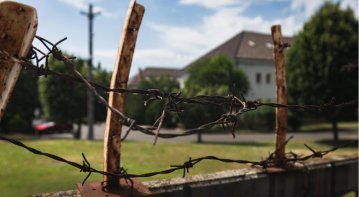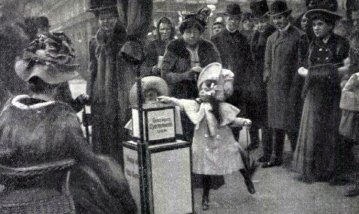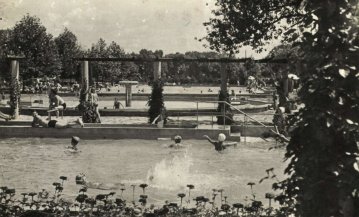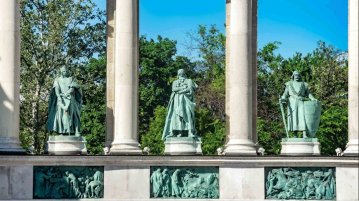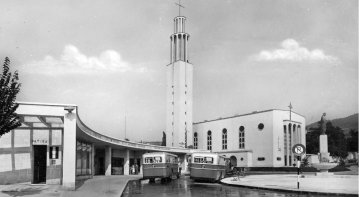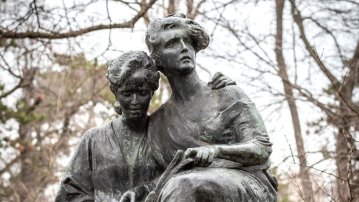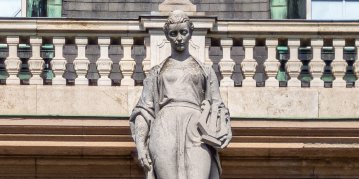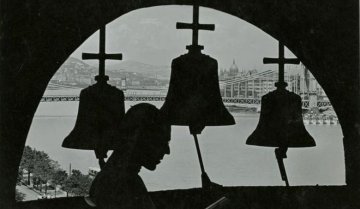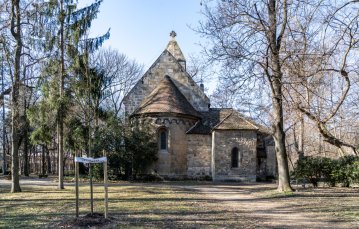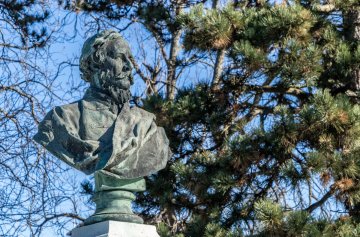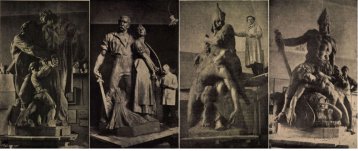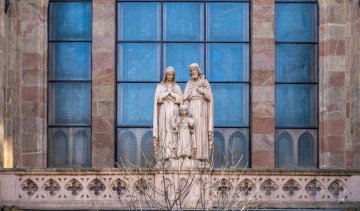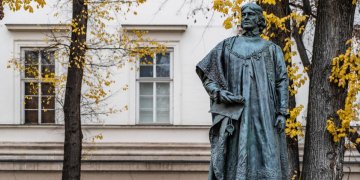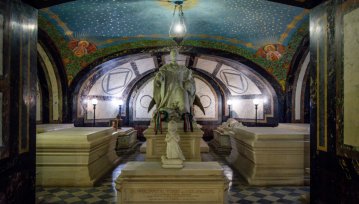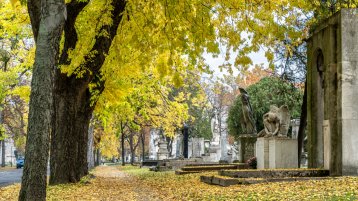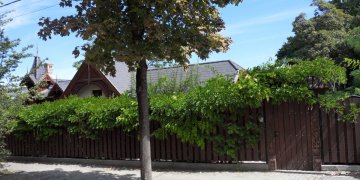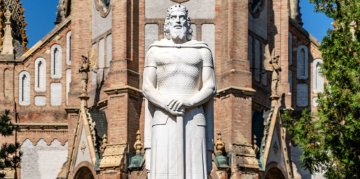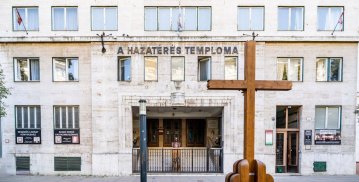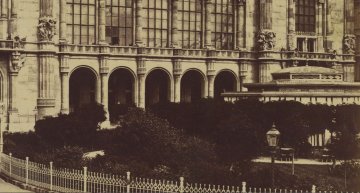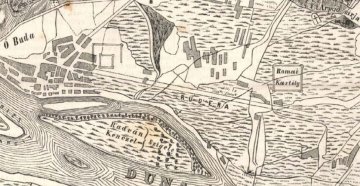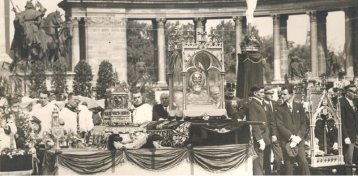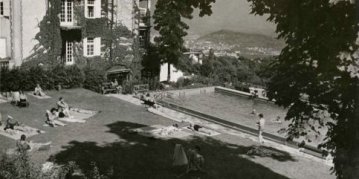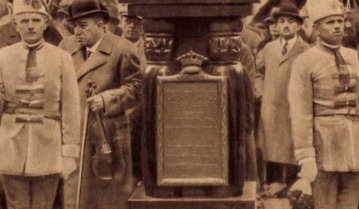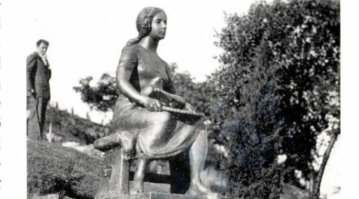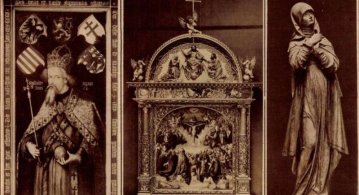
Flier Gergely
Cikkek
Thirty years ago, the Soviet army withdrew from Hungary - What happened to the former barracks in Budapest?
July 9, 2021 at 11:00 AM
Thirty years ago, in the summer of 1991, the Soviet army left Hungary permanently. The Red Army, which was temporarily stationed here at the time, but had been in the country for almost five decades, also owned a number of properties in Budapest during this time, most of which were in a very dilapidated condition at the time of the return. Since then, three decades have passed, the former military facilities have been renovated in several places and utilized very well. On the anniversary, we will visit some of them.
The first Children's Day in Budapest was held 115 years ago - Fundraising has continued for impoverished Children till today
May 30, 2021 at 9:00 AM
One hundred and fifteen years ago, in 1906, Children's Day was first held in Budapest and we would be very surprised if we could go back in time to the streets of the capital with the help of a time machine. The event was actually a relief operation for the benefit of orphaned and ill-fated children, but it was all accompanied by a public festival that, according to contemporary accounts and images, moved every stratum of society. The most distinguished women sat next to the fundraising boxes, musicians and stuntmen marched in the streets, and a multitude of people had fun and donated generously.
Medicinal water was found on Whitsun in the area of today's Pünkösdfürdő Bath
May 24, 2021 at 9:00 AM
The story is almost like a fairy tale because from the moment Sándor Ember, a legal adviser, and later Member of Parliament accidentally learned about the intention to parcel the area near Békásmegyer during a rowing tour on the Danube and bought the land after a quick decision, it was as if everything turned into gold. It soon became clear that the area had unparalleled archaeological finds across Europe and then on Whitsun in 1934, medicinal water was found on the plot, where soon, in the summer of 1935, a bath now known as Pünkösdfürdő ('Whitsun Bath') opened.
A Tuscan cast many iconic sculptures in Budapest
May 15, 2021 at 11:00 AM
Many foreign masters made a significant contribution to the development of Budapest city. Professionals from German-speaking countries excelled in the fields of architecture and applied arts in particular. A somewhat forgotten master who chose the Hungarian capital as his homeland instead of sunny Tuscany is worth noting. Raffaelo Vignali, or Rafael Vignáli in Hungarian, came to Budapest for the works of the Millennium Monument.
Renewal in Pasarét: renovation of the Franciscan church and the new parish building to be completed in the autumn
April 27, 2021 at 9:30 AM
The life of one of the first modern churches in Budapest may soon be given new impetus: the investment on Pasaréti Square, next to the church designed by Gyula Rimanóczy and completed in 1934, has begun. The project will renew the parish building, create an up-to-date library and community centre that follows the style of the modern church. Due to the works, the 2nd District church will be closed in July-August, the reconstruction is expected to be completed by Autumn.
Jókai's loyal readers - Reading Girls, a statue by Alajos Strobl to return to Jókai Square
April 16, 2021 at 9:30 AM
Not only books, but sculptures also have their own destiny – this is what comes to mind when looking at the plans for the renovation of Jókai Square in Terézváros. In the shadow of Mór Jókai's sculpture erected in 1921, a smaller work appears, which may be familiar to many from among the trees of Városliget. The statue of the Reading Girls was originally intended by the creator Alajos Strobl as a side figure of the Jókai statue in Jókai Square but was never erected on the square. The Reading Girls statue was erected in 1929 but will now be moved from Városliget to its originally intended location.
65 years of National Poetry Day – Sculptures in Budapest pay tribute to poetry
April 11, 2021 at 12:00 PM
For the second year in a row, the country is celebrating National Poetry Day behind closed doors. After last year's tour of statues, when Pestbuda visited the monuments of famous poets, we now showcase several works depicting poetry itself on Budapest's famous buildings.
Popes in Budapest – Several leaders of the Catholic Church visited the Hungarian capital before being elected
April 8, 2021 at 10:00 AM
The recent announcement that Pope Francis would visit Budapest in the autumn of 2021 for the closing Mass of the International Eucharistic Congress came as a true surprise to many. The last time a similar event took place was exactly thirty years ago, in 1991, when Pope John Paul II visited the Hungarian capital. Four other leaders of the Catholic Church came to Budapest, even before they were elected the Bishop of Rome. But what have former popes seen of our capital? In 1891 Pope Pius XI saw a tram for the first time in Budapest in 1891. John XXIII visited in 1930 for the St. Emeric Memorial Year, while Pius XII and John Paul VI attended the 1938 Eucharistic Congress. Although none of them visited as popes, it meant a lot to them and the Hungarians that they visited Budapest.
A wise, diplomatic and friendly leader – Károly Ráth the first Lord Mayor of Budapest.
February 22, 2021 at 10:00 AM
Károly Ráth became the first Lord Mayor of the united Budapest in 1873. Although the Lord Mayor was already 52 years old when he took his post, many said he gave his whole life to serving Budapest. Educated as a lawyer, the mayor was extremely popular. He held his position for 24 years and was re-elected at every election he ran in until his death. Despite this, no public space in Budapest bears his name, nor does a statue stand to honour his memory.
The oldest bell in Budapest – A Chapel on Margit Island preserves the memory of the Premonstratensians
February 14, 2021 at 11:00 AM
The Order of Canons Regular of Prémontré is celebrating its 900th anniversary this year. Traditional holds that the French order appeared in Hungary shortly after its founding during King Stephen II's rule between 1116 and 1131. The white canons remain active in Hungary to the present day. Yet in Budapest, a chapel they have not used in centuries is the most well-known building connected to them. Saint Michael's Chapel in the northern part of Margit Island was rebuilt from ruins by a central figure of Hungarian conservationism, Kálmán Lux, in the early 1930s.
The man who introduced compulsory education – 150-year anniversary on József Eötvös's death
February 2, 2021 at 2:00 PM
His statue stands on the Kossuth Monument next to the Parliament among the greatest figures of the Reform Period. His bronze statue rises proudly above a square that bears his name in the Budapest city centre. A respected secondary school was named in his honour, and the house named after his novel The Carthusian still stands on Svábhegy. He was also the politician to introduce compulsory education. The writer, politician and statesman, József Eötvös died 150 years ago. A leading figure of the Reform Period and subsequent decades, his policies are as much part of his oeuvre as his novels. Visit the sites that memorialise the nobleman in Budapest.
Irredentist statues erected on Szabadság Square 100 years ago
January 18, 2021 at 11:00 AM
The group of irredentist sculptures erected in response to the Trianon Peace Treaty was unveiled a hundred years ago, on 16 January 1921. One of the first spectacular responses to the treaty that ended World War I was welcomed by a crowd of 50.000. The sculptors. Zsigmond Kisfaludi Strobl, István Szentgyörgyi, János Pásztor and Ferenc Sidló cast the statues to depict everything that the territories lost only half a year earlier had meant in Hungarian history.
Churches of the Holy Family call the faithful in both Buda and Pest
January 13, 2021 at 1:00 PM
On 27 December last year, Pope Francis announced in Rome that the Catholic Church will celebrate a special year dedicated to family love, beginning on 19 March 2021. Discussions about the concept of a family have recently brought the issue to the front of public debates, making the Year "Amoris Laetitia Family" a particularly well-timed initiative in the country. Currently, three churches in Budapest are dedicated to the Holy Family, reminding the faithful that family appeared as a fundamental value and a natural element of human existence at the beginning of Christianity. In preparation for the year of the family, Pestbuda visited the Churches of the Holy Family in Zugliget and Terézváros.
The father of the Hungarian National Museum, Count Ferenc Széchenyi, died 200 years ago
December 21, 2020 at 9:00 AM
Among the noble families of Hungary, the Széchenyi's particularly contributed to the growth of Budapest. Works associated with István Széchenyi, the Chain Bridge and the building of the Hungarian Academy of Sciences are emblematic sites of the city, and his father, Ferenc Széchényi, can be tied to important institutions such as the National Széchényi Library and the Hungarian National Museum. The two respected institutions, which were one at the time, were founded in 1802 by Count Ferenc Széchényi as the third national collection in Europe. Today is the 200th anniversary of his death.
The most Hungarian Habsburg rests in Buda Castle – A visit to the Palatine Crypt
November 14, 2020 at 9:00 AM
A lesser-known segment of the vast Royal Palace of Buda Castle has housed the final resting place of the Palatine-branch of the House of Habsburg since the Hungarian National Awakening and the Reform Period. The crypt of the Habsburg palatines has remained almost unchanged since the 19h century. Few know that a Habsburg was buried in the crypt in the 2010s. Pestbuda visited the stunning site as part of a tour organised by the National Hauszmann Program before the restrictions announced on 10 November, limiting events entered into force. Join us on a visit to the crypt of the Royal Palace of Buda Castle.
Buried in Budapest – Great Hungarian figures born beyond the modern borders of Hungary lie in the Fiumei Road Cemetery
November 2, 2020 at 9:00 AM
The number of those born beyond Hungary's present borders but buried in Budapest is almost unfathomable. Among them several well-known and respected figures. The reason is obvious, talented and ambitious youths gravitated to Budapest from all over the country before 1920, just as they do today. Many of them completed their life's work in Budapest. Walking through the Fiumei Road Cemetery one quickly realises how many great Hungarian figures were born outside of the nation's post-Trianon borders. The compilation honours their memory.
A Székely gate on Sas Hill
October 15, 2020 at 12:00 PM
István Benedek, the renowned 20th-century writer, doctor, psychiatrist and public figure was the son of the great Székely storyteller Elek Benedek, and both of them remain household names in many Hungarian families to the present day. Beyond his books, István Benedek is memorialised by a Székely gate that he carves himself, and erected before the villa he lived in from 1957. Interestingly, the house itself was built by the well-known bookbinder Nándor Gottermayer.
Péter Pázmány never visited Budapest – Born 450 years ago the prelate remains a symbol of Hungarian unity
October 4, 2020 at 9:00 AM
When in 1635 Péter Pázmány founded the first University in Hungary – the successor of which operates in Budapest today – Buda and Pest were occupied by the Ottomans. Thus, one of the greatest figures of Hungarian baroque literature, and a leading figure of Hungarian Catholicism, never visited what is today Budapest. Nevertheless, two universities in the capital vie to preserve his memory. Several statues and other works of art depict him around the city, emphasising how the life's work of this Hungarian prelate is unavoidable in public life, education, culture and religion.
Kőbánya pays its respects to King Saint Ladislaus
September 27, 2020 at 10:00 AM
Before the stunning church planned by Ödön Lechner in Kőbánya stands a statue of King Saint Ladislaus. The district also houses not only a church, but a respected secondary school, a primary school and a square that bare the name of the saint king. As the cult of Saint Ladislaus is uniquely strong in this part of the city, the district was gifted the statue of saint in 1940, when the nation commemorated the 900th anniversary of his birth. The statue by Károly Antal, was erected before the church as the public sculpture of the king to be placed in Budapest.
Church on Szabadság tér constructed for refugees from territories lost after Trianon
September 22, 2020 at 2:00 PM
A church can be found under 2 Szabadság Square, on the ground floor of a six-storey residential building. Wedged between two other blocks of flats, those walking along the pavement may not even realise that they had walked by a church. Few know that it was built by Hungarian refugees that moved to Hungary from areas annexed by neighbouring countries after the Treaty of Trianon that ended World War I.
Intervention from Ferenc Deák may have allowed the Hangli Kiosk to open on the Danube promenade
September 15, 2020 at 9:00 AM
The Danube Promenade was once lined with several almost legendary buildings. These included the Redoute, the Queen of England Hotel, the Lloyd Palace and the Ritz Hotel. Alongside the grand palaces stood a small building, the Hangli Kiosk. The restaurant was named after its owner, Mark Hangl, an Austrian-born restaurant owner who came to Budapest at a young age, and who was helped by Ferenc Deák himself, in opening the kiosk. The Hangl Kiosk stood in front of the Pest Vigadó from 1870 until it was lost in the end days of the Second World War, alongside so many other beauties.
Frigyes Schulek designed a church to stand above Prince Árpád's final resting place
September 9, 2020 at 9:00 AM
Following the Hungarian National millennium of 1896, the country celebrated another millennium in 1907: the one-thousand-year anniversary of the death of Grand Prince Árpád, the ruler who led the conquest of the Carpathian Basin. Furthermore, the current ruler, Franz Joseph, also celebrated the 40th anniversary of his rule in the same year. A law passed to commemorate this double millennium stated that the Church built by King Saint Stephen, which had once stood on the outskirts of Óbuda where Prince Árpád was believed to be buried, should be rebuilt. Frigyes Schulek was commissioned to design the building.
Red, yellow, green – The colours of Budapest
August 27, 2020 at 5:00 PM
Ninety years ago, on 20 August 1930, new flags decorated the streets of Budapest. The red-yellow-green tricolour replaced the red-yellow-blue colours in use since 1873. Ten years after Trianon, Act XVIII of 1930 detailed changes to Budapest's flag and coat of arms. One of the reasons behind the change was that the colours of the old Budapest flag and the Romanian flag were the same, but adding the traditional colour of green, Buda to the symbols of the capital was also an important factor.
A holiday missed – The colourful history of Processions of the Holy Right
August 20, 2020 at 2:00 PM
The Procession of the Holy Right, held on 20 August, is the most important religious event in Hungary, and St. Stephen's Day is the most important holiday for all Hungarians. Sadly, this year they will be no fireworks or processions. In an emergency, it is worth looking back into the past, as many interesting and informative events have taken place during the long and tumultuous history of the Holy Right and its processions. The relic arrived in Buda in 1771 courtesy of Maria Theresa, and the first procession took place in 1818 in Buda Castle. In the 19th century, however, the holiday increasingly moved to the Pest side and was already accompanied by national interest.
Breathtaking panorama for high-altitude bathing – The forgotten memories of swimming on Svábhegy
August 11, 2020 at 1:00 PM
At the time of its construction, the Svábhegy open-air pool was characterised as an “artistic and significant work for tourism” at the opening in July 1934. The former spa, located at 430 metres above sea level, designed by our legendary athlete and architect, Alfréd Hajós, deserved the attributes above with its beautiful geographical location and cleverly solved architectural realisation.
The memory of János Bihari on Margit Island
July 26, 2020 at 3:00 PM
The history of an old statue on Margit Island hides many interesting things. How many people know today that the traditional symbol of the gipsies was a hedgehog? This symbol was included on János Bihari's, one of the most loved gipsy musicians dubbed the Gypsy King, statue on the Margit Island, created by a special figure of Hungarian statuary, the deaf-mute László Vaszary.
Lost to the World War – In the footsteps of a missing Cinderella statue
July 20, 2020 at 2:00 PM
In the playground on Gellért Hill, children would once quench their thirst at a fountain that depicted Cinderella. So in the 1920s, Budapest decided to order several fountains and statues depicting famous characters from stories. The goal was to ensure that the fountains would not only quench children's thirst but support their aesthetic sense.
Dürer in Budapest – The Hungarian roots of an internationally respected painter
July 14, 2020 at 11:00 AM
Ajtósi Dürer Way is a busy and well-known road that runs alongside City Park. However, the roots of its name are less well-known. Albrecht Dürer was a world-renowned Bavarian Renaissance painter with Hungarian roots. His father was born in the Hungarian village of Ajtós next to Gyula, from where he emigrated to Nuremberg, where the famous artist was later born. The Hungarian roots of the painter were a well-known fact in Nuremberg as well. Thus, on the 400th anniversary of this death, a delegation from the city visited Budapest. The Bavarians gave the Hungarian capital a unique statue to commemorate the event, while Budapest named a road after the famous painter.

